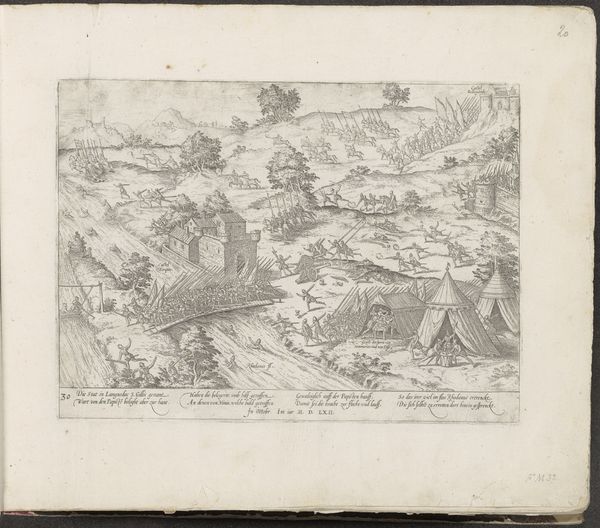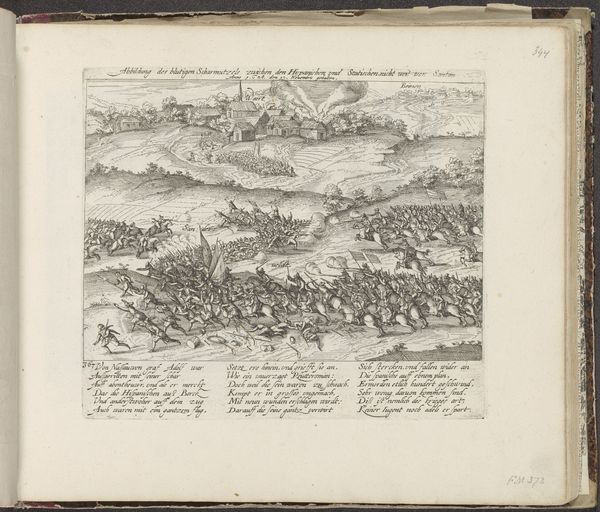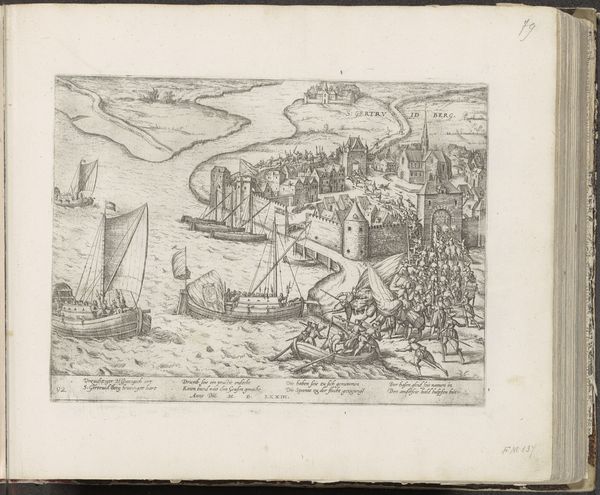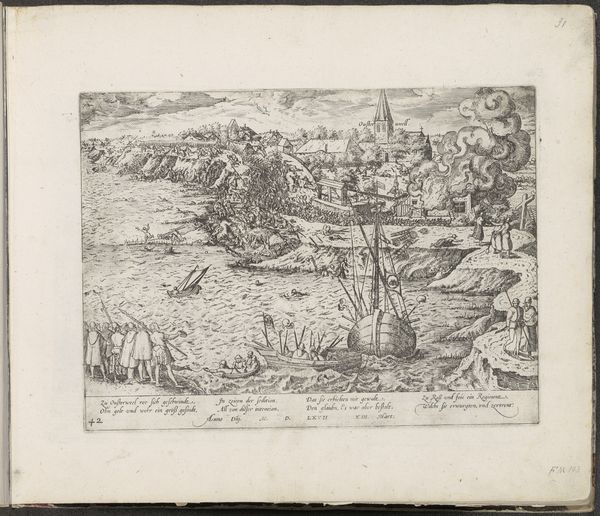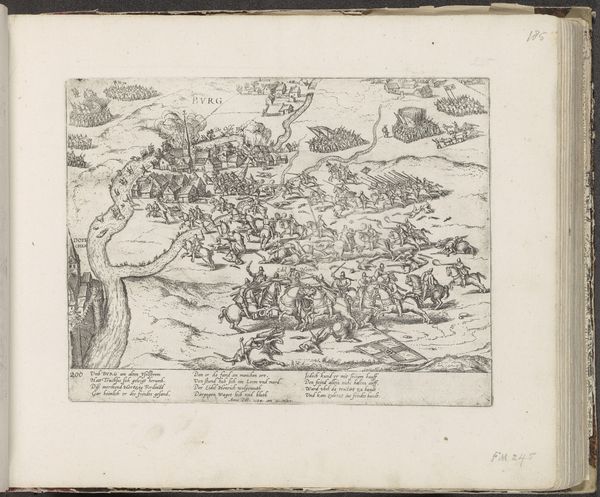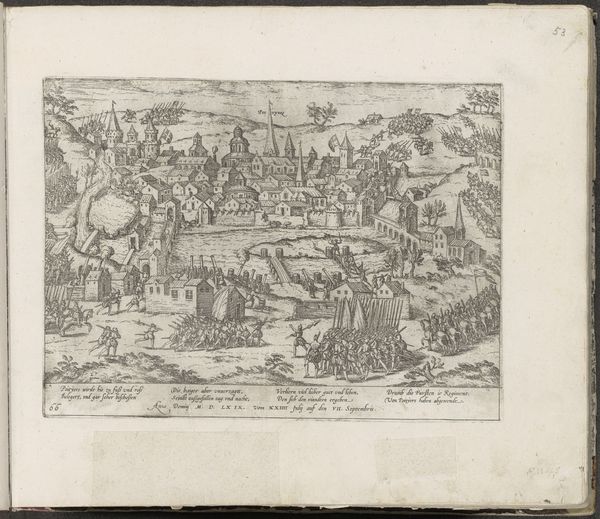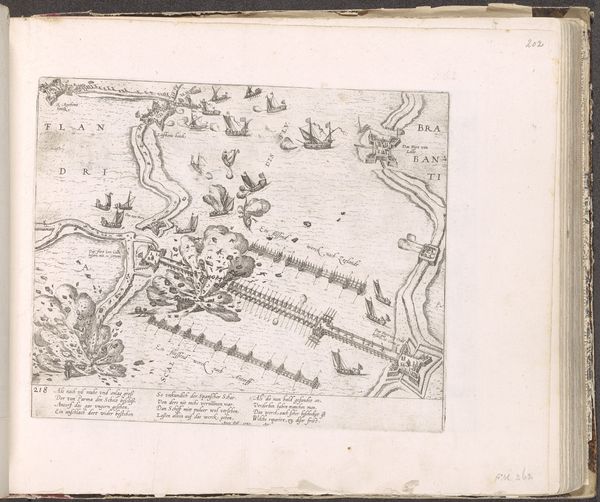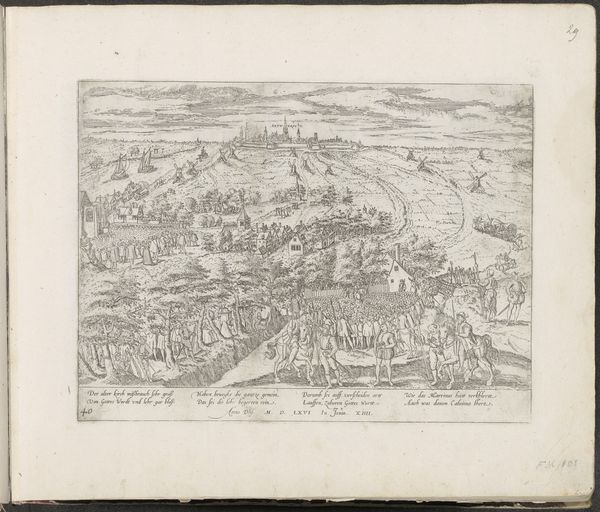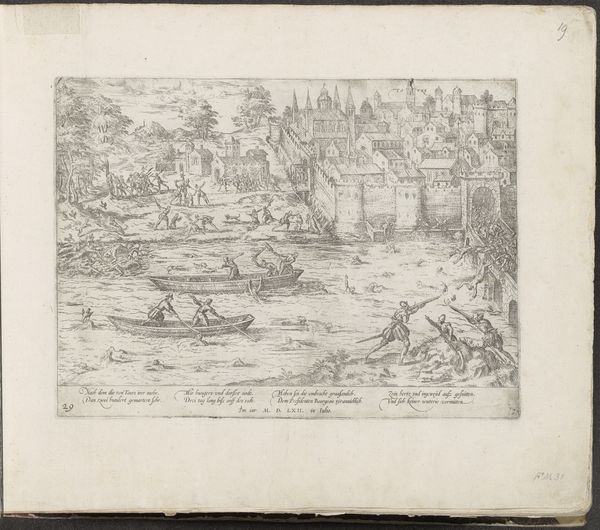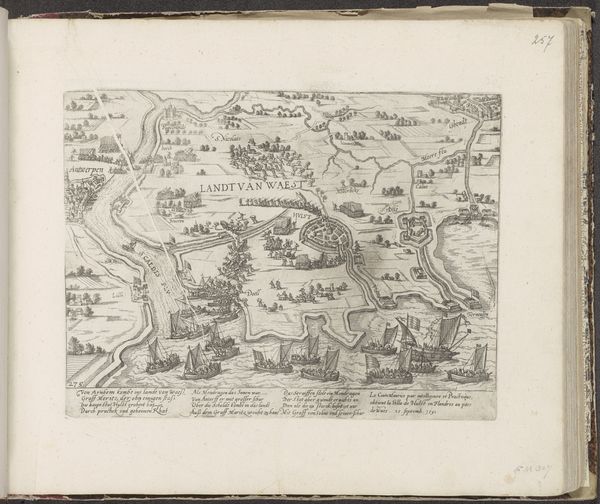
drawing, print, ink, engraving
#
drawing
#
dutch-golden-age
# print
#
landscape
#
mannerism
#
ink
#
history-painting
#
engraving
Dimensions: height 216 mm, width 268 mm
Copyright: Rijks Museum: Open Domain
Curator: What a strikingly busy image! My first impression is a dense choreography of forms, creating an overall impression of dynamic tension, though somewhat spatially ambiguous. Editor: Indeed. What we're observing is Frans Hogenberg's print, dating from approximately 1587 to 1591, depicting the 'Slag op de Kauwensteinse dijk, 1585', which translates to 'Battle on the Cowenstein Dike, 1585.' It's currently housed here at the Rijksmuseum. Curator: Hogenberg's use of line is incredibly detailed. Each tiny ship, each puff of smoke, precisely rendered. Do you think this meticulousness underscores the significance the battle held at the time? The linear perspective flattens the field. Editor: Absolutely. The symbols woven into this engraving would have resonated powerfully. Warfare at sea represents conflict but also potential triumph and glory for the Dutch. Ships bearing specific flags are asserting dominance, the smoke suggesting destruction and transformation through violence. Notice too the topographical detail and how such visual records reinforce a sense of historical identity. Curator: The clustered composition certainly creates a narrative of intense struggle. Is that an element of Mannerism peeking through in this later depiction? Look how the scene almost bulges outward, brimming with activity that hints at larger events just beyond the frame. I see a parallel with Italian Renaissance battle scenes; here adapted in a very Netherlandish manner. Editor: Intriguing! Hogenberg often adopted established visual tropes to communicate the magnitude of such conflicts. However, while adopting conventional symbols, he reconfigured their meanings for a Dutch audience. This particular image is laden with layers of intended meanings around Dutch identity formation, its mercantile power, its protestant religion. Curator: These symbols – a sort of visual shorthand. Do you think later viewers have perhaps missed certain historical resonances that would be immediately apparent at the time? It almost begs the question what the work tells about the *construction* of history and our selective memories around key events. Editor: Precisely. We, as viewers, actively negotiate the meaning, viewing these images through a temporal distance and often unaware of specific codes deeply meaningful at that time. Today it stands perhaps less as a historic document and more as an intriguing image to decode and interpret within an evolving socio-political context. Curator: Indeed. What began as simply a scene of organized chaos to me, on deeper consideration reveals many more intricate nuances relating to the complex formation of collective and cultural memory. Editor: I concur. Exploring Hogenberg’s artistic decisions opens to greater contextual richness. The composition, initially appearing simply chaotic, emerges to convey more deliberate symbolism regarding Dutch aspirations to nationhood.
Comments
No comments
Be the first to comment and join the conversation on the ultimate creative platform.
